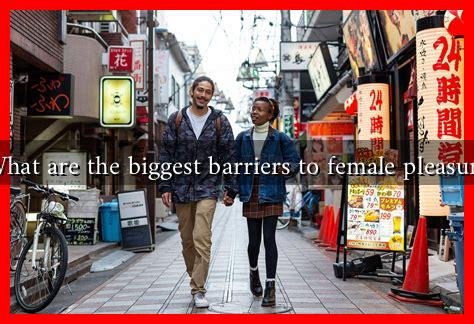-
Table of Contents
What Are the Biggest Barriers to Female Pleasure?
Female pleasure is a topic that has historically been shrouded in stigma, misinformation, and cultural taboos. Despite the growing awareness and acceptance of female sexuality, numerous barriers still hinder women’s ability to experience pleasure fully. This article explores the most significant obstacles women face, including societal norms, lack of education, and personal factors, while providing insights and statistics to highlight the importance of addressing these issues.
Societal Norms and Cultural Taboos
One of the most significant barriers to female pleasure is the societal norms and cultural taboos surrounding female sexuality. Many cultures have perpetuated the idea that women should be modest and reserved about their sexual desires. This can lead to feelings of shame and guilt when women seek pleasure.
- Historical Context: For centuries, women have been taught to prioritize male pleasure over their own. This has created a culture where female desire is often overlooked or dismissed.
- Media Representation: The portrayal of female sexuality in media often reinforces stereotypes that can be damaging. Women are frequently depicted as passive recipients of male desire, which can limit their understanding of their own pleasure.
- Religious Influences: Many religions promote conservative views on sexuality, which can further suppress women’s sexual expression and pleasure.
Lack of Comprehensive Sexual Education
Another critical barrier to female pleasure is the lack of comprehensive sexual education. Many educational systems fail to provide adequate information about female anatomy, sexual health, and pleasure.
- Inadequate Curriculum: Studies show that many sex education programs focus primarily on male anatomy and reproduction, neglecting female anatomy and sexual pleasure. According to a report by the Guttmacher Institute, only 24 states in the U.S. mandate sex education, and even fewer require it to be medically accurate.
- Myths and Misconceptions: The lack of education leads to widespread myths about female pleasure, such as the idea that women should not enjoy sex or that their pleasure is secondary to men’s.
- Access to Resources: Many women do not have access to reliable resources that can educate them about their bodies and sexual health, further perpetuating ignorance and shame.
Personal Factors and Psychological Barriers
Personal factors, including psychological barriers, also play a significant role in hindering female pleasure. These can stem from past experiences, mental health issues, or even relationship dynamics.
- Trauma and Abuse: Many women have experienced sexual trauma, which can create barriers to experiencing pleasure. According to the National Sexual Violence Resource Center, 1 in 5 women have experienced completed or attempted rape in their lifetime.
- Body Image Issues: Societal pressures regarding body image can lead to low self-esteem and body dissatisfaction, making it difficult for women to feel comfortable and confident during sexual experiences.
- Relationship Dynamics: Power imbalances in relationships can also affect a woman’s ability to express her desires and seek pleasure. Communication is key, yet many women feel unable to voice their needs.
The Importance of Open Dialogue
Addressing the barriers to female pleasure requires open dialogue and education. Conversations about female sexuality should be normalized, allowing women to share their experiences and learn from one another.
- Empowerment Through Education: Providing comprehensive sexual education that includes information about female pleasure can empower women to take control of their sexual health.
- Support Networks: Creating safe spaces for women to discuss their experiences can help break down the stigma surrounding female pleasure.
- Advocacy for Change: Advocating for policy changes in education and healthcare can help ensure that women’s sexual health needs are met.
Conclusion
In conclusion, the barriers to female pleasure are multifaceted, encompassing societal norms, lack of education, and personal factors. By addressing these issues through open dialogue, comprehensive education, and supportive networks, we can create an environment where women feel empowered to explore and embrace their sexuality. Understanding and dismantling these barriers is crucial not only for individual well-being but also for fostering a more equitable society. As we continue to challenge the stigma surrounding female pleasure, we pave the way for future generations to experience their sexuality without shame or fear.
For further reading on this topic, consider exploring resources from organizations like Planned Parenthood and Guttmacher Institute.

